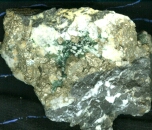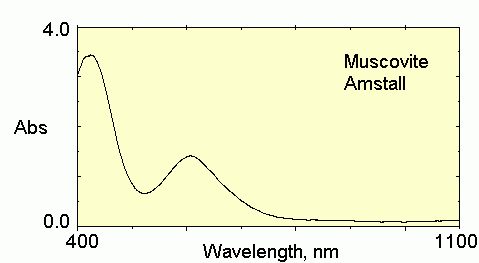
hand specimen
Andreas Ertl1, John Rakovan2,
John
M. Hughes2, Heinz-Jürgen
Bernhardt3, and George
R. Rossman4
1Institut
für Mineralogie und Kristallographie,
Geozentrum, Universität
Wien, Althanstraße 14, A-1090 Vienna, Austria
2Department
of Geology and Environmental Earth Science,
3Institut
für Geologie, Mineralogie und Geophysik, Ruhr-Universität Bochum,
D-44801
Bochum, Germany
4Division
of Geological and Planetary Sciences, California Institute of
Technology,
In hand specimen, the mica appears as a thin green veins of mica flakes.
The optical spectrum arises from V3+.
